There are few pickup and SUV owners who wouldn't jump at the opportunity to increase their truck's fuel economy, reduce tire wear, and improve overall braking and handling performance--all without spending a dime. So why is it that 75 percent of us don't do it? The answer is simply being unaware-unaware that a tire loses about 1 psi per month from normal seepage; unaware that underinflated tires, even by a few pounds, have a significant adverse affect to truck or SUV performance; unaware of what tire pressures are at any given point in time; unaware of the proper tire pressures and at what point they actually need re-inflating.
Low Tire Concerns Why all the hoopla about monitoring tire pressures? Contrary to what you may initially think about government intrusion into every aspect of one's life, it's really about safety, fuel economy, and performance.
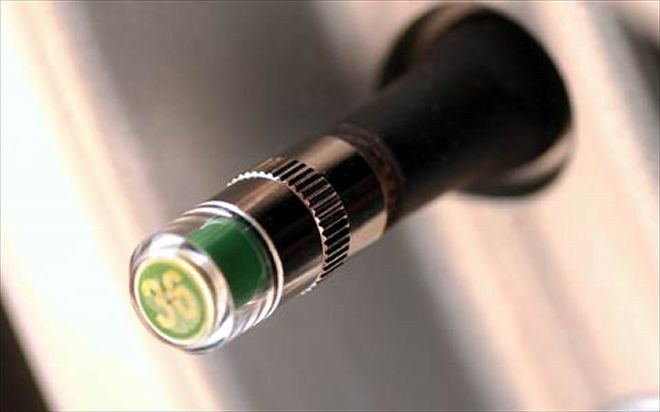
| Accu-Pressure
From a safety standpoint, tires underinflated by as little as 3 psi can adversely affect cornering, both on the open road as well as negotiating on/off-ramps. Braking is also affected. According to the NHTS and Goodyear Tire and Rubber Company reports, "Tires are designed to maximize their performance capabilities at a specific inflation pressure. When tires are underinflated, the shape of the tire's footprint and the pressure it exerts on the road surface are both altered. This degrades the tire's ability to transmit braking force to the road surface."
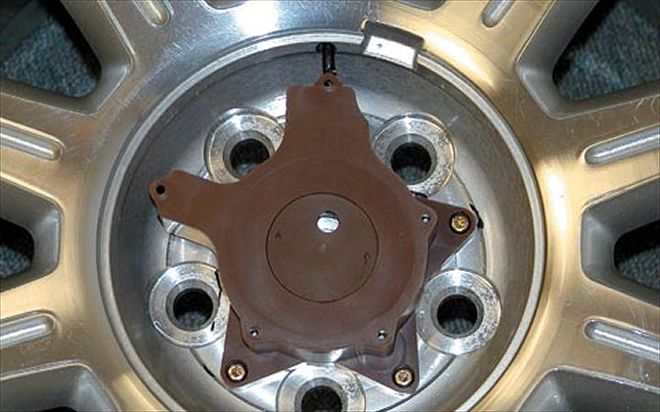
| Cycloid AutoPump
Underinflated tires furthermore give fuel economy a hit. For every 1 psi all four tires are underinflated, there's an 0.4-percent drop in fuel economy. So, driving around with soft tires is cutting your truck's gas mileage by 3.3 percent. Over the course of a year, that adds up in dollars.
Underinflated tires also degrade tire life as the edges wear faster than the center of the tread-face. Over the course of a 120,000 miles that can add up to spending money on a set of tires you wouldn't need if the tires were kept inflated to proper pressure.
Such awareness by vehicle owners has brought about a lot of changes, including both aftermarket and original equipment tire-pressure-monitoring systems (TPMS) available to provide a visual warning that a tire needs attention.
TREAD Act 2001 This increased use and availability of TPMS aren't necessarily by choice. In the summer of 2001, the Transportation Recall Enhancement, Accountability, and Documentation (TREAD) Act made it a law that the U.S. Department of Transportation undertake certain activities to improve highway safety.
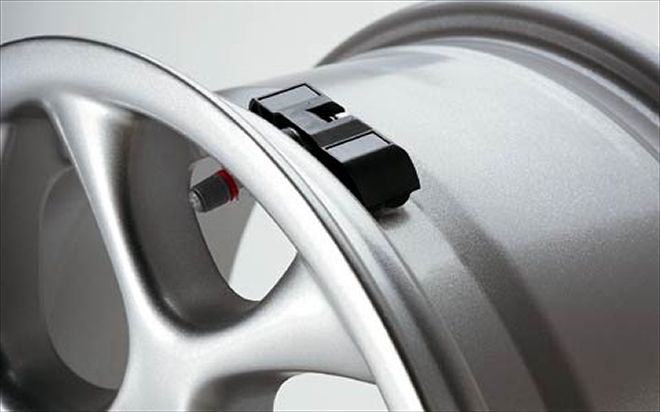
| SmarTire Gen II
The TREAD Act is quite broad and, among its many regulations that deal with the various manufacturers and agencies immediate reporting of tire failures, vehicle accidents, and so forth, is a law that requires new vehicles produced after November 2006 to have a TPMS in place.
Today, we can expect the high-end models of a specific manufacturer will get the good stuff first. We do know, for example, the '04 Cadillac SRX midsize SUV will have a direct TPMS while the '04 Aztec and Rendezvous will continue to use the indirect or wheel-speed TPMS.
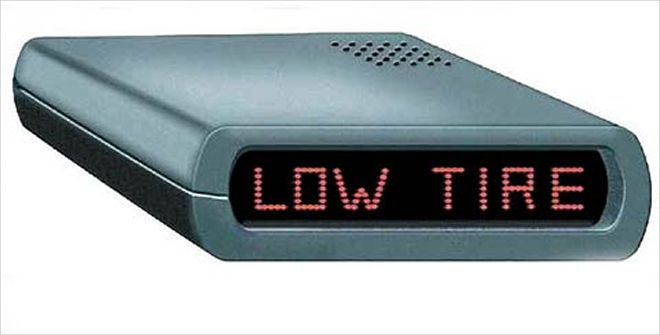
| Tire Sentry Monitor
Direct TPMS The direct system measures the actual tire pressure through some type of device attached to the actual wheel that broadcasts a signal to a monitoring device incorporated into the dash display or some other device to visually or audibly warn a driver a tire is below a certain threshold.
This can be done in numerous ways, including through a pressure sensor banded to the inside of the wheel before the tire is mounted or via a pressure- monitoring device that attaches to or replaces the conventional valve stem or valve-stem cap.
Schrader Electronics, which supplies the major auto manufacturers with the Smart Valve RF Tire Pressure Monitoring System, utilizes such technology. Its sensor is actually part of the valve stem and is accurate down to two percent. The newest versions are utilizing microchip technology, so each TPMS can be extremely small and relatively inexpensive. Phillips Semiconductors has designed a $3 microchip that will communicate with the keyless-entry receiver so the only hardware needed to bring a new vehicle into the world of TPMS is a sensor in the tire.
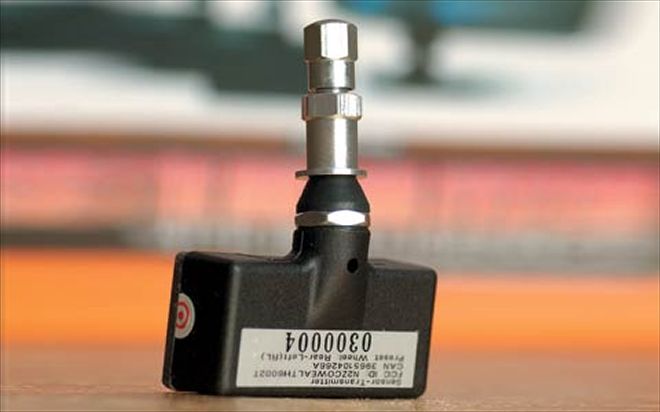
| Intellivalve
Indirect TPMS Indirect TPMS does not measure actual tire pressure. Instead, it monitors the rotational speed of the individual wheels and calculates that data to warn a driver of tire pressures below the acceptable margin. When a tire loses air pressure its effective diameter gets smaller and the rotational speed increases in relation to the other tires. The vehicle's onboard computer and/or a chip in the indirect TPMS device(s) picks up on the differences in wheel speeds and provides a signal to warn the driver.
Some of these indirect systems tie in directly to the vehicle's anti-lock braking system (ABS), significantly reducing the cost of implementing TPMS.
Most experts say the indirect method is less precise than measuring actual tire pressures, but it's still an effective warning system and is actually in place on a lot of today's vehicles, mostly cars. In fact, there are now more than 2.5 million GM cars equipped with one variety or another of TPMS.
The point to all of this? Keep a close eye on those tire pressures, with or without the use of a TPMS, and you'll likely experience far fewer problems than a truck owner who ignores his rolling rubber.
Alternative Choices --B.S. During the last few years there have been numerous direct and indirect TPMS available as aftermarket accessories, and, as you might expect, there is a considerable price range.
The chrome caps from Accu-Pressure Safety Caps, Inc., uses a spring-loaded pressure-activated bar to display green in their clear tops when tire pressure is adequate. When pressure drops 4 to 5 psi below normal the caps shows yellow and red when the tire pressure is 10 pounds below the cap's preset rating. The caps are sold in 2psi increments from 26-40 psi, then 44, 50, and 60 psi, and will cost less than $20.
Tire Sentry is a brand-new wireless monitoring system that uses advanced RF microchip technology mounted inside a replacement valve-stem cap, which continuously monitors tire pressure. A two-inch-diameter gauge on the dash alerts you when pressures fall below eight percent (2.5 psi) of the tire- pressure preset for the caps. Price for this kit, which should be available by late summer, is expected to be less than $350.
The system on my '02 Chevy Trailblazer comes from Intellivalve and, like most of the new direct TPMS, it incorporates four individual wireless transmitters inside a small plastic housing attached to a chrome valve stem. Tire-pressure and heat readings are transmitted to a monitor inside the vehicle. This system warns you of either high or low tire pressures and temperatures. The out-of-the-box high setting is 35 psi, and the low, when warning sounds and light flashes, is 30 psi. The Intellivalve is distributed exclusively through PDK Wheels & Auto Accessories for $299.
For something more sophisticated, SmarTire, one of the first companies on the market, offers its GenII system with transmitters attached to the rims of a vehicle via a band. (It's worth noting, valve-stem-type sensors don't fit all OEM and aftermarket 18-inch and larger wheels.) A full-function display allows the driver to monitor temperatures and pressures of individual tires. Along with flashing lights and warning alarms, the GenII TPMS also incorporates battery-saving features such as transmitting normal tire pressures every four to six minutes as well as sleep modes when the vehicle is parked. Price is $300 for the full-function display; add $79 for dual-rear-wheel applications.
One of the more technologically advanced systems is the Cycloid Company AutoPump shown on the Jeep Grand Cherokee Concierge concept vehicle. The unit, about the size of a hockey puck, attaches to the outside of the wheel and automatically keeps the tire inflated to proper pressures. An in-vehicle monitor provides the driver with necessary tire-pressure information and warnings. The AutoPump isn't yet available for truck owners, but the company says it should be within the next two years for around $300.
 | Accu-Pressure
From a safety standpoint, tires underinflated by as little as 3 psi can adversely affect cornering, both on the open road as well as negotiating on/off-ramps. Braking is also affected. According to the NHTS and Goodyear Tire and Rubber Company reports, "Tires are designed to maximize their performance capabilities at a specific inflation pressure. When tires are underinflated, the shape of the tire's footprint and the pressure it exerts on the road surface are both altered. This degrades the tire's ability to transmit braking force to the road surface."
| Accu-Pressure
From a safety standpoint, tires underinflated by as little as 3 psi can adversely affect cornering, both on the open road as well as negotiating on/off-ramps. Braking is also affected. According to the NHTS and Goodyear Tire and Rubber Company reports, "Tires are designed to maximize their performance capabilities at a specific inflation pressure. When tires are underinflated, the shape of the tire's footprint and the pressure it exerts on the road surface are both altered. This degrades the tire's ability to transmit braking force to the road surface."
 | Cycloid AutoPump
Underinflated tires furthermore give fuel economy a hit. For every 1 psi all four tires are underinflated, there's an 0.4-percent drop in fuel economy. So, driving around with soft tires is cutting your truck's gas mileage by 3.3 percent. Over the course of a year, that adds up in dollars.
Underinflated tires also degrade tire life as the edges wear faster than the center of the tread-face. Over the course of a 120,000 miles that can add up to spending money on a set of tires you wouldn't need if the tires were kept inflated to proper pressure.
Such awareness by vehicle owners has brought about a lot of changes, including both aftermarket and original equipment tire-pressure-monitoring systems (TPMS) available to provide a visual warning that a tire needs attention.
| Cycloid AutoPump
Underinflated tires furthermore give fuel economy a hit. For every 1 psi all four tires are underinflated, there's an 0.4-percent drop in fuel economy. So, driving around with soft tires is cutting your truck's gas mileage by 3.3 percent. Over the course of a year, that adds up in dollars.
Underinflated tires also degrade tire life as the edges wear faster than the center of the tread-face. Over the course of a 120,000 miles that can add up to spending money on a set of tires you wouldn't need if the tires were kept inflated to proper pressure.
Such awareness by vehicle owners has brought about a lot of changes, including both aftermarket and original equipment tire-pressure-monitoring systems (TPMS) available to provide a visual warning that a tire needs attention. | SmarTire Gen II
The TREAD Act is quite broad and, among its many regulations that deal with the various manufacturers and agencies immediate reporting of tire failures, vehicle accidents, and so forth, is a law that requires new vehicles produced after November 2006 to have a TPMS in place.
Today, we can expect the high-end models of a specific manufacturer will get the good stuff first. We do know, for example, the '04 Cadillac SRX midsize SUV will have a direct TPMS while the '04 Aztec and Rendezvous will continue to use the indirect or wheel-speed TPMS.
| SmarTire Gen II
The TREAD Act is quite broad and, among its many regulations that deal with the various manufacturers and agencies immediate reporting of tire failures, vehicle accidents, and so forth, is a law that requires new vehicles produced after November 2006 to have a TPMS in place.
Today, we can expect the high-end models of a specific manufacturer will get the good stuff first. We do know, for example, the '04 Cadillac SRX midsize SUV will have a direct TPMS while the '04 Aztec and Rendezvous will continue to use the indirect or wheel-speed TPMS.
 | Tire Sentry Monitor
Direct TPMS
| Tire Sentry Monitor
Direct TPMS | Intellivalve
Indirect TPMS
| Intellivalve
Indirect TPMS